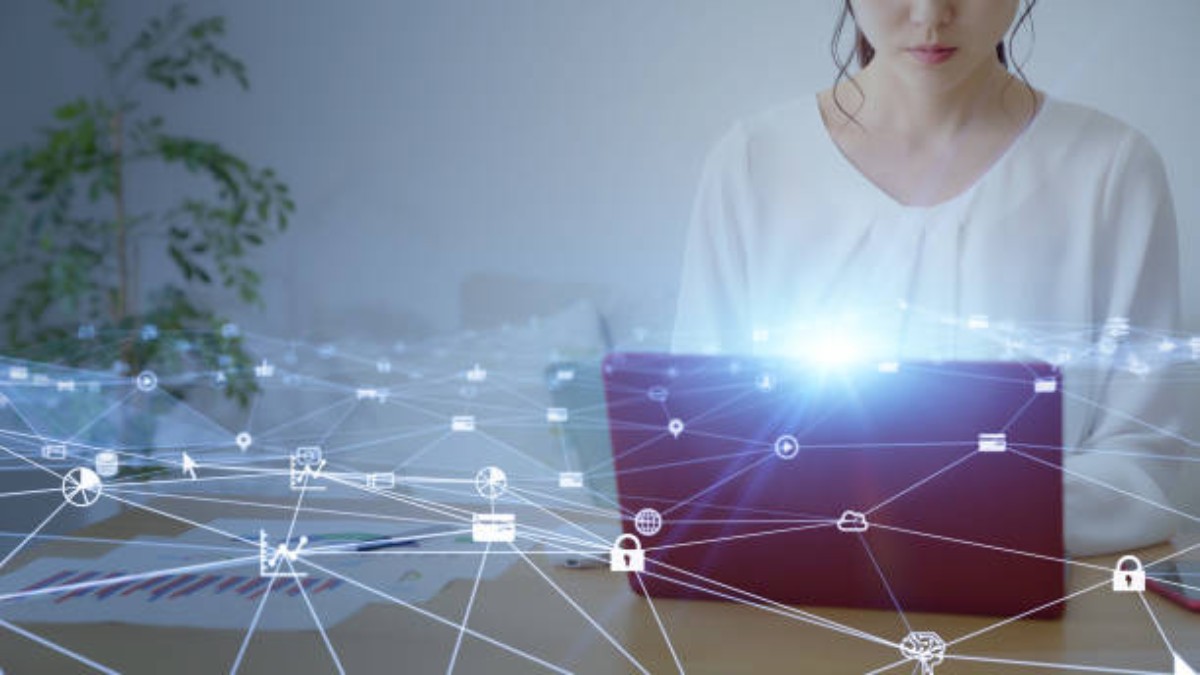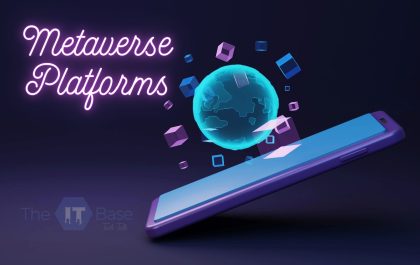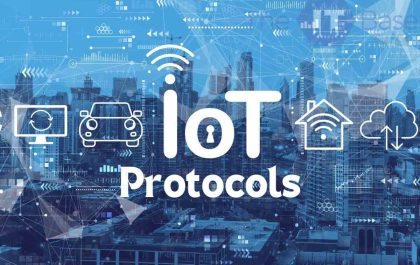The digital transformation of businesses has evolved rapidly, especially in the face of unexpected challenges such as the global pandemic. This transition has significantly impacted the tech, AI, and cybersecurity sectors, leading to an enormous shift towards remote work.
This shift, while offering numerous benefits, has also raised important questions about the security of information in a decentralized work environment.
Table of Contents
The Remote Work Landscape
Recent data from Pumble’s comprehensive study on remote work underscores a noticeable surge in the adoption of remote work, especially within the tech, AI, and cybersecurity sectors, over the past decade.
For employees, it means greater flexibility, reduced commute times, and an improved work-life balance. Employers, on the other hand, benefit from reduced overhead costs and access to a broader talent pool
The rise of sophisticated technologies and AI tools has made this transition smoother, facilitating seamless communication and collaboration.
4 Cybersecurity Threats Amplified by Remote Work
Remote work, once viewed as an occasional perk, has evolved into a norm for many industries, offering a host of benefits from increased flexibility to better work-life balance.
However, every silver lining has its cloud. The widespread adoption of remote work has brought to light a series of cybersecurity challenges that both employers and employees must confront.
1. Phishing and Social Engineering
The absence of face-to-face interactions and the immediate feedback loops in physical offices make remote workers vulnerable.
This isolation becomes a breeding ground for cybercriminals to employ manipulative tactics, preying on workers’ potential lack of vigilance or the absence of quick peer validation.
2. Unsecured Networks
Corporate infrastructures are designed with multiple security layers.
Home networks, often set up with ease-of-use rather than security in mind, lack these defenses, making them softer targets for intrusions.
3. BYOD (Bring Your Own Device) Concerns
The demarcation between professional and personal devices has become porous with remote work.
This intersection can lead to inadvertent sharing of sensitive data or the introduction of security vulnerabilities from less-secured personal devices.
4. Public Wi-Fi Perils
The allure of working from a café or public space is undeniable for many remote workers.
Yet, these public networks are often unsecured, posing significant risks when transmitting sensitive or proprietary information.
As cyber threats become more intricate and pervasive, the onus is on both employers and employees to remain vigilant. One pressing concern that continues to emerge is determining accountability post a cyber incident. Who shoulders the blame? The nuances of liability in cybercrime cases adds another layer of complexity to the cybersecurity discourse.
The Role of AI in Remote Work Cybersecurity
The fusion of Artificial Intelligence (AI) with cybersecurity strategies represents a transformative approach in addressing the unique challenges posed by remote work.
Here’s a deeper dive into the key roles AI plays in fortifying remote work cybersecurity:
Automated Threat Detection
Traditional cybersecurity measures often rely on human monitoring and manual interventions, which can be time-consuming and susceptible to oversight.
AI, with its advanced algorithms, can process vast swathes of data in real time. This allows for the immediate detection of unusual patterns or anomalies which might be indicative of a cyber threat. By automating this process, not only is the detection speed enhanced, but potential human errors are also minimized, ensuring that even the most covert threats don’t slip through the cracks.
AI-driven Authentication
Conventional authentication methods, such as passwords, have shown vulnerabilities and can be exploited. As remote work blurs the boundaries of traditional office network perimeters, ensuring that only authorized personnel access sensitive data becomes paramount.
AI takes authentication to the next level. Biometric verification, which includes facial recognition, fingerprint scanning, and even voice recognition, offers a more secure alternative to passwords.
Furthermore, AI can analyze behavioral patterns, like typing speed or app usage habits, to continually verify a user’s identity. If any deviation from the norm is detected, it could trigger additional security checks, adding an extra layer of protection.
Predictive Analytics
Reactive approaches to cybersecurity, where threats are addressed only after they occur, can lead to significant data breaches and financial losses.
AI flips this reactive paradigm on its head. Through predictive analytics, AI can analyze historical data, recognize patterns, and predict potential future threats or system vulnerabilities. By forecasting these issues, organizations can take preemptive measures, reinforcing their defenses and mitigating risks before any actual breach occurs. This proactive stance can be invaluable, especially in a remote work setting where the attack surface is considerably broadened.
Strategies for Ensuring Cybersecurity in a Remote Work Setting
For businesses to thrive in this new landscape, they must adopt robust cybersecurity practices:
1. VPNs (Virtual Private Networks)
The transmission of data across the internet can be intercepted, especially when done over unsecured networks.
VPNs act as secure tunnels, encrypting data packets that flow between an employee’s device and the company’s servers. This encryption ensures that even if data is intercepted, it remains unreadable to unauthorized entities. Organizations should prioritize providing and mandating the use of VPNs for all remote work operations.
2. Security Training
Employees can inadvertently become weak links in cybersecurity chains, especially if unaware of the latest cyber threats.
By organizing regular training sessions, employees can be kept abreast of the evolving threat landscape and be taught best practices. Simulated phishing tests and hands-on workshops can further enhance their ability to detect and counteract cyber threats.
3. Multi-factor Authentication (MFA)
Passwords alone are no longer deemed sufficient due to vulnerabilities like brute-force attacks and password leaks.
MFA requires users to provide two or more verification forms to access a platform. This could be a combination of something they know (password), something they have (a mobile device or smart card), or something they are (biometrics). This layered defense ensures that even if one form is compromised, unauthorized access remains difficult.
4. Endpoint Security
Each device that connects to a network represents a potential entry point for cyber threats.
Security standard before accessing the company’s network. This might include having updated antivirus software, firewalls, and other security protocols.
5. Software Updates
Outdated software can have vulnerabilities that cybercriminals can exploit.
Regular software updates not only introduce new features but also patch known vulnerabilities. Businesses should establish a routine where software, especially security software, is updated regularly, minimizing potential entry points for malware and other threats.
The Future of Remote Work and Cybersecurity
As working from home or other remote locations becomes the norm, our strategies for keeping data safe must evolve from makeshift solutions to comprehensive, long-term plans. The rise of quantum computing showcases this change: it brings the potential for super-strong encryptions, but it can also challenge our current security methods.
Education is our best defense. As cyber threats grow in sophistication, it’s crucial to train professionals who are well-versed in the latest in cybersecurity, irrespective of their primary domain. AI and machine learning are at the forefront of this defense, offering tools that can quickly detect and respond to threats. But it’s a double-edged sword, as advancements in AI might also empower cybercriminals to craft more intricate attacks.
Lastly, as the world embraces remote work, we can expect tighter regulations around data privacy and security. Businesses will need to be proactive, ensuring they meet these standards. This isn’t just about adhering to the law; it’s about maintaining trust with customers and stakeholders. In sum, the relationship between remote work and cybersecurity is intricate and ever-evolving, demanding continuous attention and adaptation.
TheITbase
Related posts
Hot Topics
Metaverse Platforms for Virtual Workspaces
Ever felt like your office is stuck in the Stone Age? Tired of endless Zoom calls that feel about as…
IoT Protocols: The Language of Smart Devices
Ever wonder how your smart fridge talks to your phone? Or how does your fitness tracker know to buzz when…



